 {CorelDraw file}
{CorelDraw file} {CorelDraw file}
{CorelDraw file}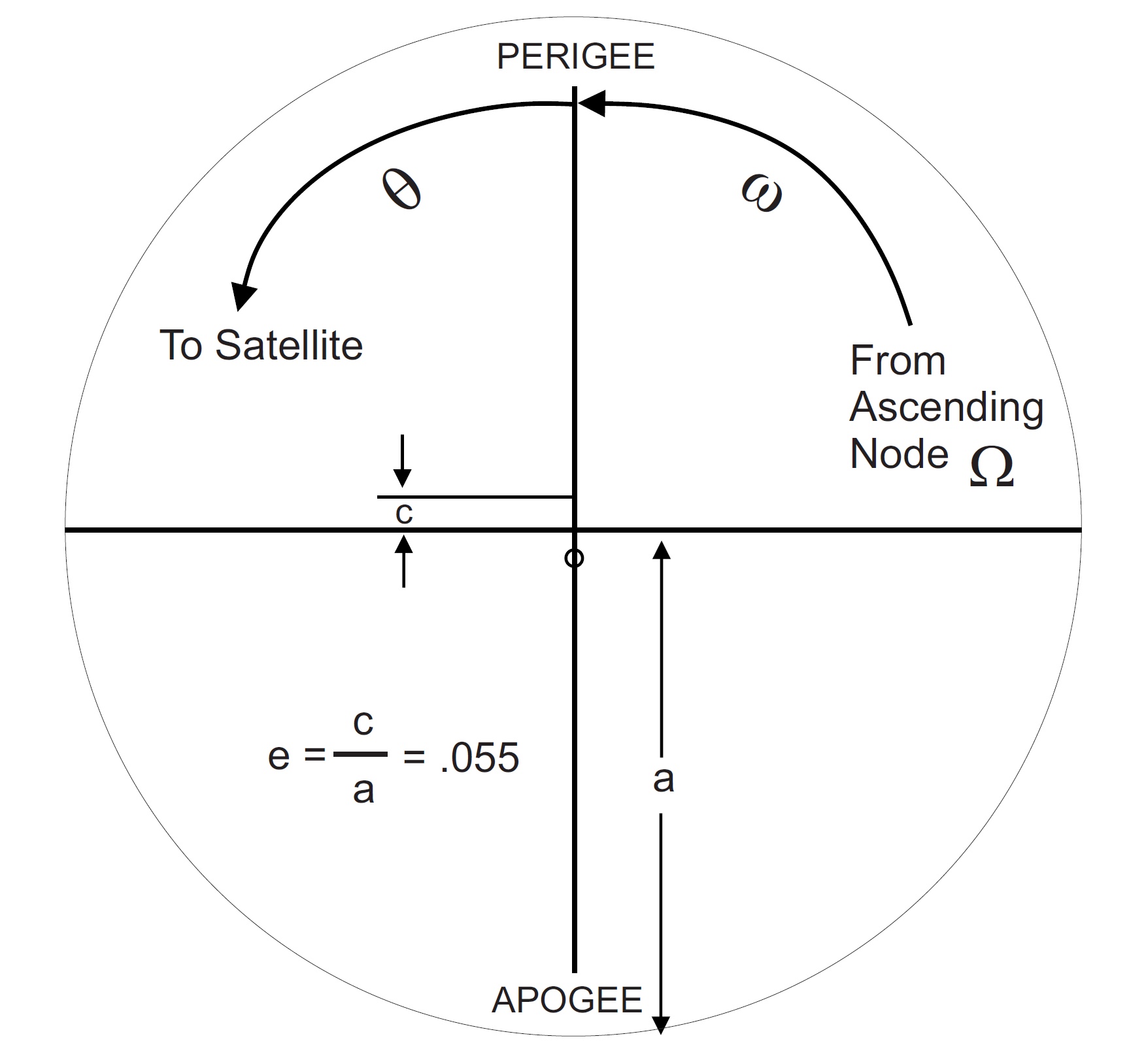 {CorelDraw file}
{CorelDraw file}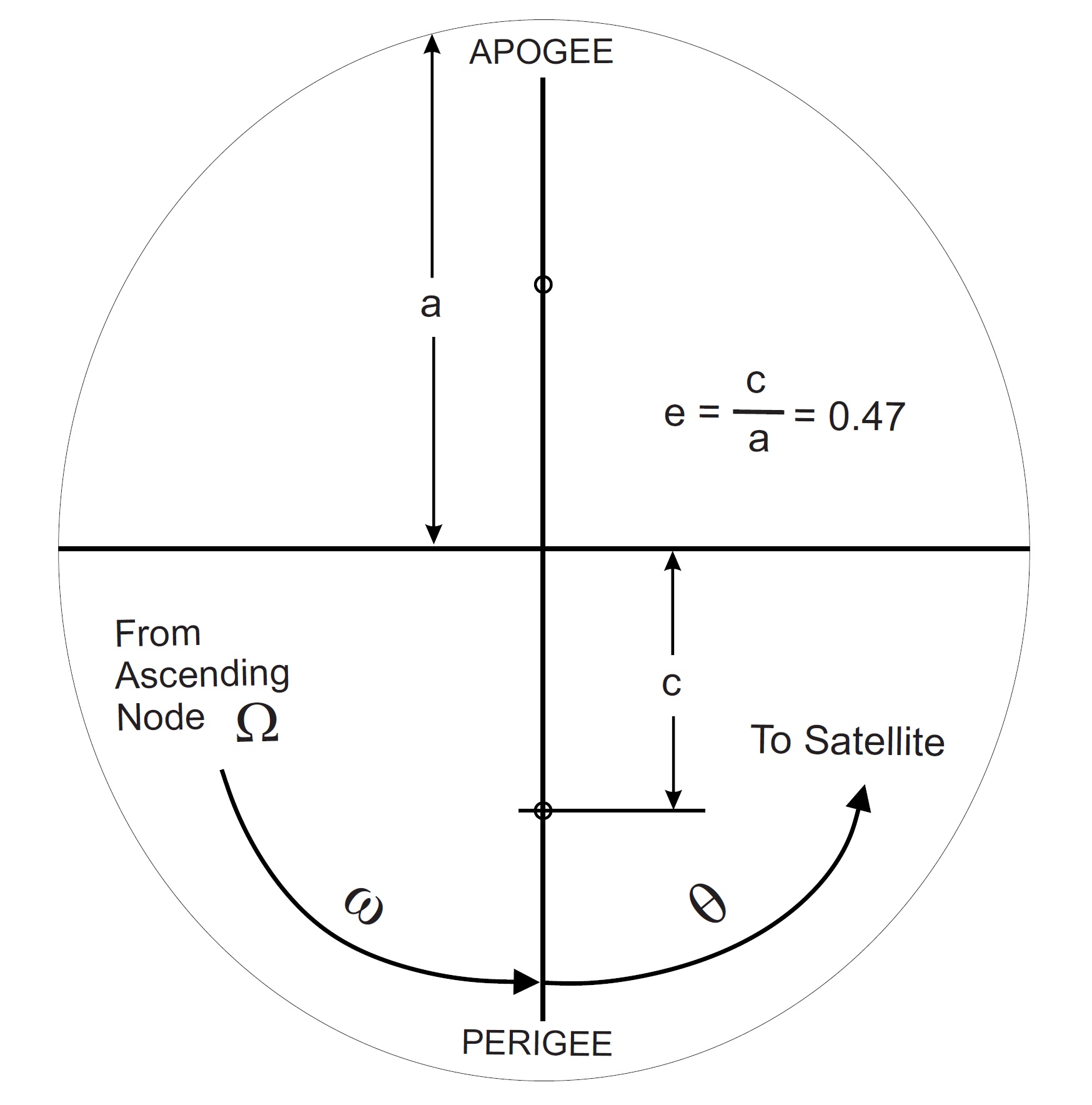 {CorelDraw file}
{CorelDraw file}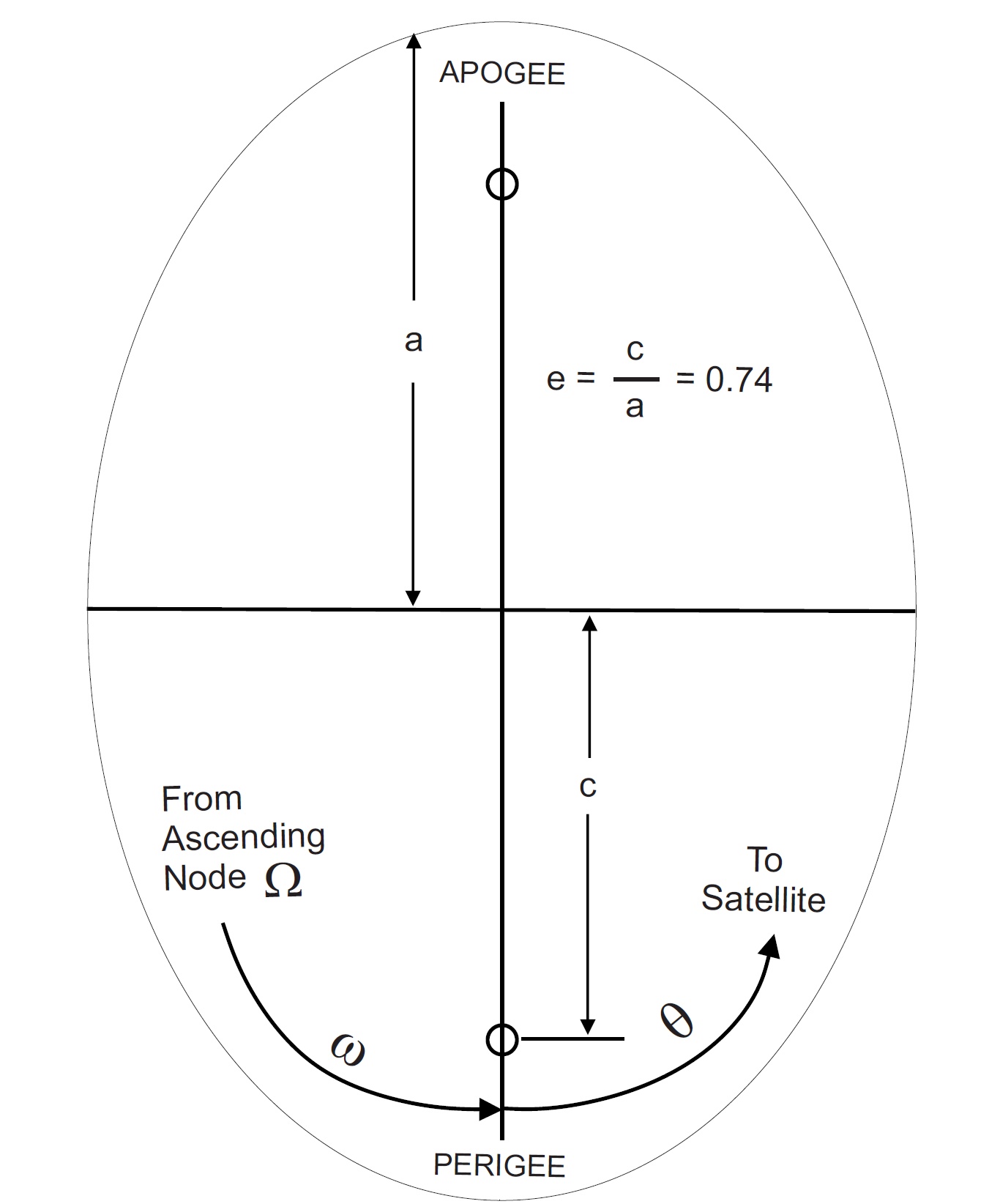 {CorelDraw file}
{CorelDraw file}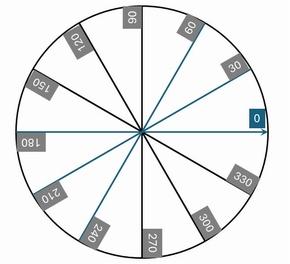 {PowerPoint file}
{PowerPoint file}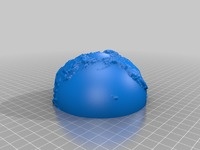 {3D Printed}
{3D Printed}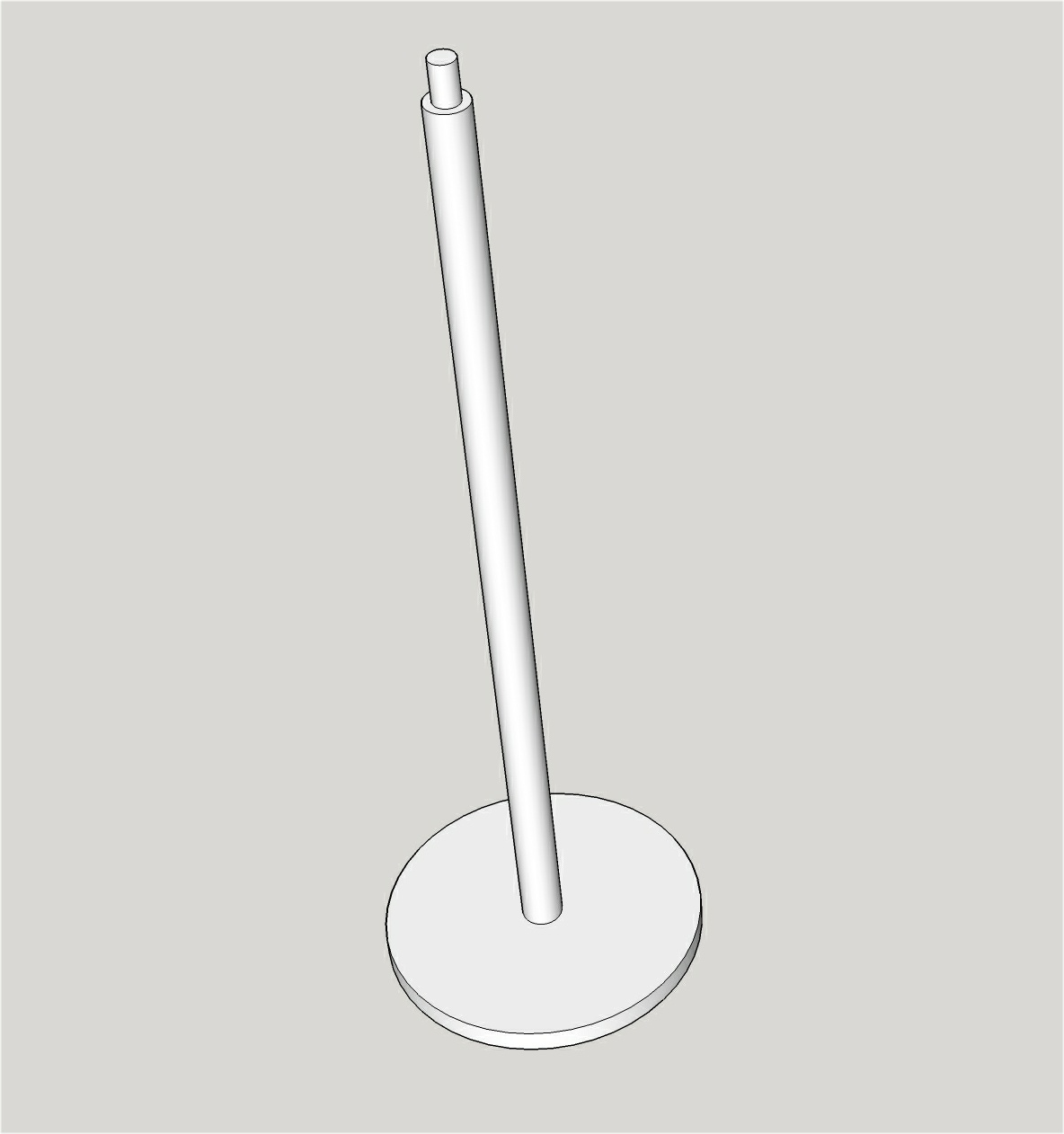 {3D STL file}
{3D STL file}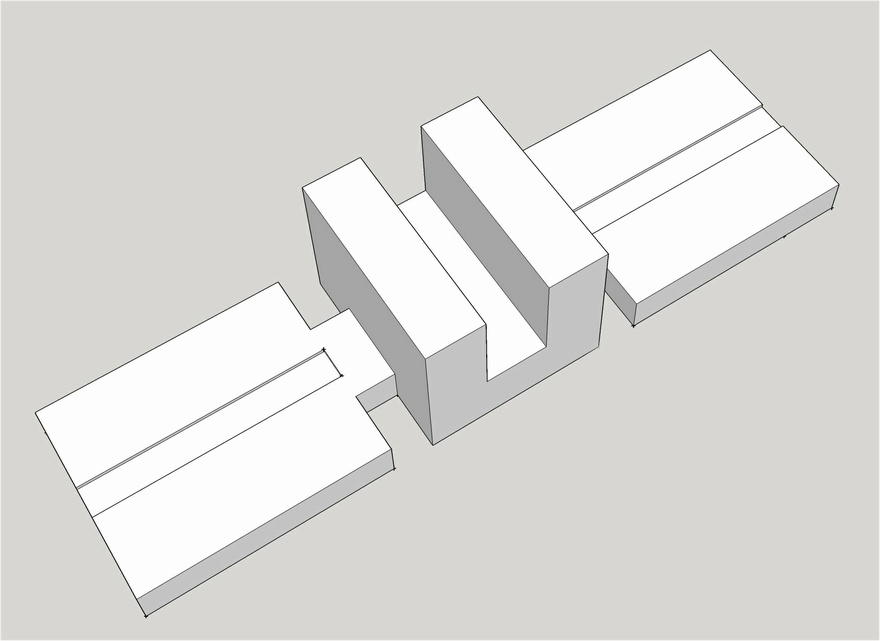 {3D STL file}
{3D STL file}This presentation was developed as a basic introduction to seven parameters, or elements, that define a satellite orbit. It focuses on each element in a simplified, understandable approach with little math and no physics background. For instance, only a geocentric (Earth centered) orbit is considered and gravity is not explained. Seven defining parameters of an orbit are applicable to any satellite orbiting around a single gravitational body. There are several other approaches and refinements to define an orbit but any study of orbits will reference these parameters.
A set of charts are in both PowerPoint and pdf:
Summary:
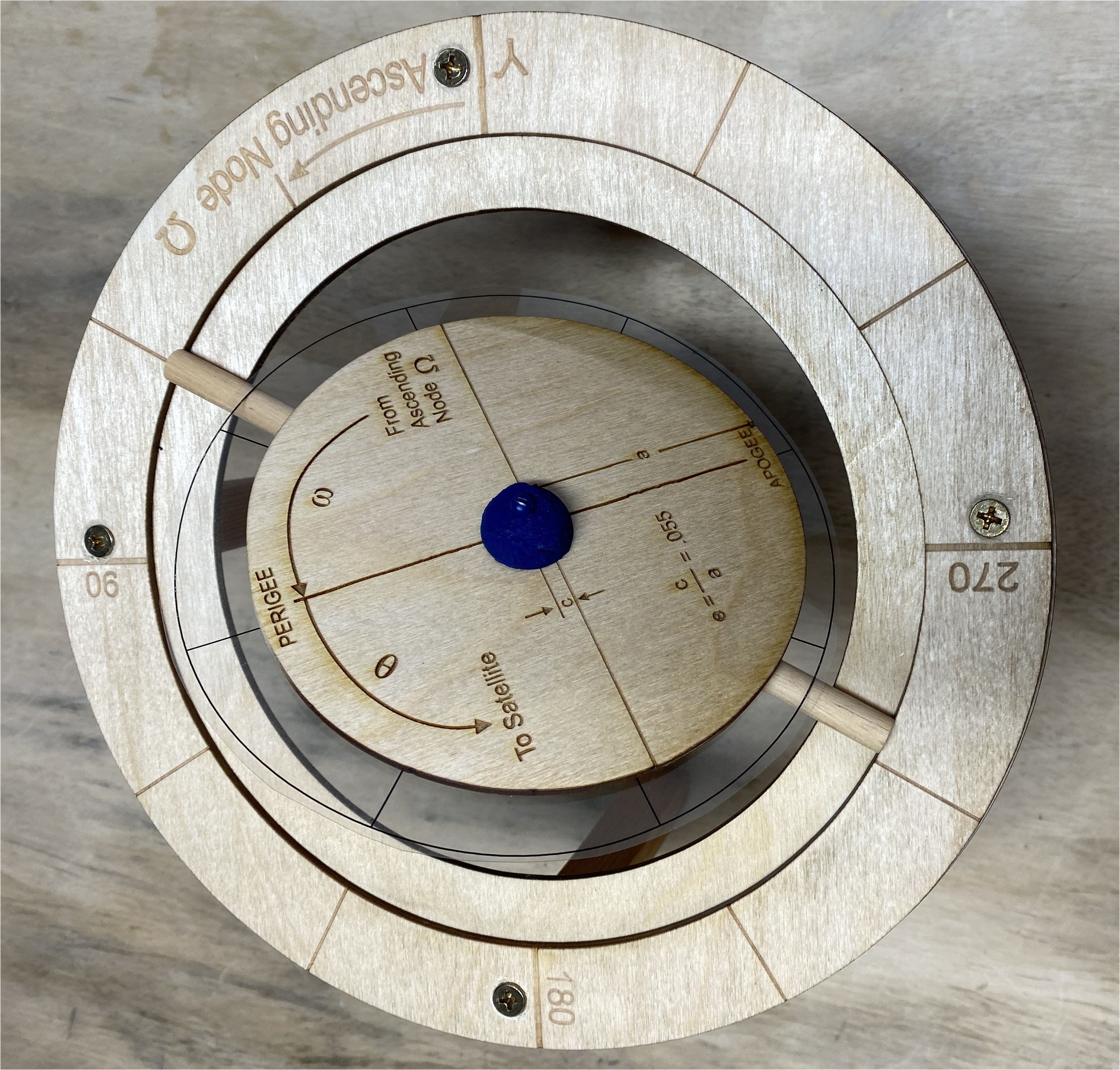
It is always helpful to see a physical model to understand new concepts. For an in-person class setting, the design of this model is detailed here for use by any instructor. There are five laser engraved pieces, two for the earth equator and three different orbits. All seven orbital parameters can be demonstrated by moving the engraved orbit plates.
There are three elliptical orbit plates for Semi-circular, mid-elliptical, and high-elliptical orbits. The semi-major axis and eccentricity are noted on the plates. The outside of the plates are the orbit of the satellite.
| Base Ring |  {CorelDraw file} {CorelDraw file} |
| Top Ring |  {CorelDraw file} {CorelDraw file} |
| Semi-circular Orbit |  {CorelDraw file} {CorelDraw file} |
| Mid-Elliptical Orbit |  {CorelDraw file} {CorelDraw file} |
| Elliptical Orbit |  {CorelDraw file} {CorelDraw file} |
| Transparent Circular Protractor |  {PowerPoint file} {PowerPoint file} |
| Earth Hemisphere |  {3D Printed} {3D Printed} |
| Post to mount Earth sphere |  {3D STL file} {3D STL file} |
| Satellite Clip |  {3D STL file} {3D STL file} |
| 4 - 6"x1/2" square wood for legs | |
| 2 - 180mm x 1/4" Wood Dowels | |
| #8 Flat head brass screws | |
| #4 x 1" screw and nut | |
| Overhead projector transparency sheet |
The main elliptical orbit plates are made with a laser engraver using 1/8" wood. Alternatives are using a 3D printer if the printing area is large enough. Use this as a guide for your creativity.
Place the Earth globe, on its stand, in the center of the circular outer rings. Note that the ring aligns with the equator of the earth. All references to orbits with this demo will be considering the earth at the center and the longitude measured related to the earth's equator. The zero point on longitude is measured from the first point of Ares, marked on the ring.
Lay one of the orbital plates attached to the dowel on the model. These seven orbital parameters can be shown:
![]()
This Orbit Model by Bruce Bream is licensed under a
Creative Commons Attribution-NonCommercial-ShareAlike 4.0 International License.
You are free to Share and Adapt this model.
Permissions beyond the scope of this license may be available from
tarrow@roadrunner.com